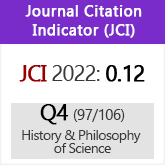Monstrosity’s anatomy: the figure of the monster as the object of a modern medical-anatomical look
DOI:
https://doi.org/10.3989/asclepio.2015.14Keywords:
Monster, Anatomy, Descartes, Hermaphrodites, MedicineAbstract
This paper presents an analysis of the monster category on medical research in the modernity. This analysis is based on the development of human anatomy in the sixteenth century and in the study of the physiological relationship between body and organs in the XIX. The Cartesian anatomical research and the naturalization of monster category will open the way to the physiological view of life as a prelude to legal and social medicine.
Downloads
References
Ancet, Pierre (2006), Phénoménologie des corps monstrueux, Paris, PUF. http://dx.doi.org/10.3917/puf.ancet.2006.01
Bahuin, Caspar (1600), De hermaphroditorum monstrosorumque partuum natura, Frankfurt, Oppenheim.
Bataille, Georges (1970), "Les écartes de la nature". En: Bataille, Georges, Oeuvres Complètes, vol. I, Paris, Gallimard, pp. 228-231.
Bates, Alan (2005), "Early Modern Classifications of Monstrous Births", Social History of Medicine, 18 (2), pp. 141-158. http://dx.doi.org/10.1093/sochis/hki029
Bibtol-Hespériès, Annie (2002), Le principe de vie chez Descartes, Paris, Vrin.
Bichat, Xavier (1864), Recherches physiologiques sur la vie et la mort, Paris, Charpentier.
Boaistuau, Pierre (1561), Histoires Prodigieuses, Paris, Gabriel Buon.
Galeno (2002), Procedimientos anatómicos, Madrid, Gredos.
Canguilhem, Georges (1980), La Connaissance de la Vie, Paris, Vrin. PMid:7403287
Canguilhem, Georges (2009), Estudios de historia y de filosofía de las ciencias, Buenos Aires, Amorrortu.
Daston, Lorraine and Khatarine Park (1998), Wonders and the Order of the Nature, New York, Zone Books.
Davidson, Arnold (2006), La aparición de la sexualidad, Barcelona, Alpha Decay.
Descartes, René (1897a), Oeuvres AT, vol. I, Paris, Léopold Cerf.
Descartes, René (1897b), Oeuvres AT, vol. IX, Paris, Léopold Cerf.
Descartes, René (1988), Correspondance avec Elisabeth, Paris, Flammarion.
Descartes, René (1999), Principios de Filosofía, Madrid, Alianza. PMid:10521730
Domurat, Alice (2000), Hermaphrodites and the Medical Invention of Sex, Harvard University Press. PMid:10868830
Foucault, Michel (1996), La vida de los hombres infames, Buenos Aires, Altamira. PMCid:PMC1225207
Foucault, Michel (2007), Los anormales, Buenos Aires, FCE.
García Ballester, Luis (1976), Historia Social de la Medicina en España de los siglos XIII al XVI, Madrid, Akal.
Kant, Immanuel (1999), Crítica del Juicio, Madrid, Espasa Calpe.
Le Breton, David (1990), Antropología del cuerpo y la modernidad, Buenos Aires, Nueva Visión.
Liceti, Fortunio (1616), De mostrorum, Padova, Gaspar Crivellari.
Negri, Antonio (2008), Descartes político, Madrid, Akal.
Nogales, Amparo (2004), "Aproximación a la Historia de las Autopsias", Journal of Autopsy, vol. II (1), pp. 3-8.
Paré, Ambroise (1987), Monstruos y Prodigios, Madrid, Siruela.
Park, Katharine (2006), Secrets de femmes. Le genre, la génération et les origines de la dissection humaine, Paris, Les Presses du Réel.
Pichot, André (1993), Histoire de la notion de vie, Paris, Gallimard. PMid:8254239
Peset, Jose Luis (1973), "La morfología biológica del barroco". En: P.Laín Entralgo, Historia Universal de la medicina, Madrid, Salvat, pp. 217-233.
Porter, Roy (2004), Breve historia de la medicina, Madrid, Taurus.
Roger, Jaques (1963), Les Sciences de la vie dans la pensé française du XVIII siècle. Paris, Armand Colin. PMCid:PMC221251
Saint-Hilaire, Isidore G. (1832), Traité de teratology, Paris, J.B.Baillère.
Schenk, Johannes (1608), Monstrorum Historia Memorabilis, Frankfurt, De Bry.
Tort, Patrick (1980), L´ordre et les montres: le debat sur l´origine des déviations anatomiques au XVIIIe siècle, Paris, Le sycomore.
Turró, Salvi (1985), Descartes: Del hermetismo a la nueva ciencia, Barcelona, Anthropos.
Turró, Salvi (1989), "La evolución del pensamiento cartesiano", en R.Descartes, El mundo, Barcelona, Anthropos.
Váquez García, Francisco y Moreno, Andrés (1997), Sexo y razón. Una Genealogía de la moral sexual en España (Siglos XVI-XX), Madrid, Akal.
Vázquez García, Francisco y Cleminson, Richard (2011), "El destierro de lo maravilloso. Hermafroditas y mutantes sexuales en la España de la Ilustración", Asclepio, 63 (1), pp. 7-38. http://dx.doi.org/10.3989/asclepio.2011.v63.i1.484
Vázquez García, Francisco y Cleminson, Richard (2013), Sex, identity and hermaphrodites in Iberia, 1500-1800, London, Pickering and chatto.
Vega, Maria José (1995), "La monstruosidad y el signo: formas de presignificación en el renacimiento y la reforma", Signa. Revista de Semiótica, 4, pp. 225-242.
Vesalio, Andrés (1960), De humani corporis fabrica, Bruxelles, Medicinal H.
Wolfe, Charles (2008), "L´anomalie du vivant. Réflexions sur le pouvoir messianique du monstre", Multitudes, 33, pp. 53-62. http://dx.doi.org/10.3917/mult.033.0053
Published
How to Cite
Issue
Section
License
Copyright (c) 2015 Consejo Superior de Investigaciones Científicas (CSIC)

This work is licensed under a Creative Commons Attribution 4.0 International License.
© CSIC. Manuscripts published in both the printed and online versions of this Journal are the property of Consejo Superior de Investigaciones Científicas, and quoting this source is a requirement for any partial or full reproduction.All contents of this electronic edition, except where otherwise noted, are distributed under a “Creative Commons Attribution 4.0 International” (CC BY 4.0) License. You may read here the basic information and the legal text of the license. The indication of the CC BY 4.0 License must be expressly stated in this way when necessary.
Self-archiving in repositories, personal webpages or similar, of any version other than the published by the Editor, is not allowed.















